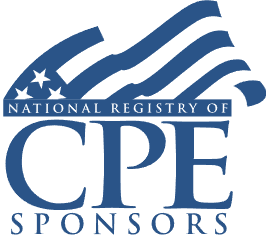Repatriation Tax Planning: Inbound Asset Transfers, Cash Dividends and Other Strategies for Tax Professionals
Tax Attributes Under Section 367(b) and Tax Reform Alterations, Deemed Dividends, Section 245A Participation Exemption

Welcome! Strafford is now BARBRI! The expert courses you know from the trusted global leader in legal education.
Course Details
- smart_display Format
On-Demand
- signal_cellular_alt Difficulty Level
Intermediate
- work Practice Area
Corporate Tax
- event Date
Tuesday, October 30, 2018
- schedule Time
1:00 PM E.T.
- timer Program Length
110 minutes
-
BARBRI is a NASBA CPE sponsor and this 110-minute webinar is accredited for 2.0 CPE credits.
-
BARBRI is an IRS-approved continuing education provider offering certified courses for Enrolled Agents (EA) and Tax Return Preparers (RTRP).
This course will guide tax professionals and advisers on tax challenges involving inbound asset transfers, cash dividends and other repatriation strategies post-tax-reform. The panel will discuss tax issues associated with inbound liquidations under Section 332 and reorganizations under Section 368, actual and deemed dividends, Section 245A participation exemption, and tax planning methods to achieve and maintain tax benefits for the U.S. taxpayer.
Faculty

Mr. Knobler focuses his practice on U.S. international and domestic tax planning, mergers and acquisitions, and controversies. His clients range from start-ups to multinational corporations.

Mr. Skinner focuses his practice on U.S. international taxation, with a particular emphasis on tax planning and international corporate transactions. He has broad experience in international tax issues for U.S. corporations, foreign corporations, and high net-worth individuals, and has represented clients across a variety of industries. He teaches international taxation as an adjunct professor in San Jose State University’s MST program, and speaks and writes frequently on international and corporate tax issues.
Description
Tax reform had a significant impact on the earnings and profits of U.S. taxpayers regarding inbound asset transfers. The new tax law, specifically the imposition of Section 965, GILTI and Section 245A, altered the application of Section 367(b) and the tax planning issues and considerations for repatriation of foreign cash, requiring careful planning by tax professionals to ensure that U.S. taxpayers obtain any allowable tax benefits.
Before tax reform, such earnings and profits were considered deemed dividends and fully taxable. Now, earnings and profits from inbound asset transfers may be subject to other newly enacted tax rules that avoid the application of Section 367(b), such as the conversion of pre-tax reform earnings into previously taxed income under Section 965 or earnings and profits previously taxed under subpart F or GILTI. Previously taxed income and the participation exemption may support tax-free dividends out of much foreign earnings and profits.
Any deemed dividends from inbound asset transfers taxable to an acquiring U.S. corporation or its shareholders may also qualify as tax-free transactions under subchapter C rules as applied to liquidations and reorganizations or be fully deductible under new Section 245A by meeting specific requirements. Tax professionals and advisers must become knowledgeable of the impact of newly enacted tax law on inbound asset transfers to properly advise taxpayers and develop planning methods to ensure an optimum level of tax benefits.
Listen as our panel discusses the application of Section 367(b) to inbound asset transfers, the taxation of such earnings or profits to U.S. taxpayers, the impact of newly enacted tax law, and tax planning methods to achieve and maintain tax benefits to U.S taxpayers.
Outline
- Application of Section 367(b) and regulations to inbound asset transfers
- Comparison of Sectoni 367(b) with other methods of repatriating foreign cash, such as actual dividends and deemed dividends under Section 304
- The treatment of previously taxed income in repatriation and inbound asset transfers, foreign exchange and stock basis consequences
- Foreign tax credit consequences of inbound asset transfers and repatriation transactions
- Subchapter C rules and inbound asset transfers as tax free transactions
- Tax planning tips and mechanisms to achieve and maintain tax benefits in inbound asset transfer and repatriation transactions
Benefits
The panel will analyze and tackle these and other relevant topics:
- How the operation of Section 367(b) and the treatment of actual and deemed dividends has changed post-Tax Reform
- Avoiding tax traps for U.S. taxpayers on repatriation of overseas cash
- The impact of newly enacted tax rules on repatriation strategies for foreign corporations owned by U.S. taxpayers
- Requirements of Section 245A and obtaining full deduction of deemed dividends
- Inbound asset transfers as tax-free transactions under subchapter C
- Foreign tax credit and foreign exchange consequences of repatriation of cash in the new environment
- Best practices and planning techniques for tax professionals and advisers regarding repatriation of foreign cash
NASBA Details
Learning Objectives
After completing this course, you will be able to:
- Recognize how the operation of Section 367(b) has changed for inbound asset transfers
- Ascertain methods to avoid tax traps for U.S. taxpayers for inbound asset transfers
- Understand the treatment of earnings and profits of inbound Section 332 liquidations and 368 reorganizations
- Identify the impact of newly enacted tax rules on inbound asset transfers of foreign corporations to U.S. taxpayers
- Understand the requirements of Section 245A and methods in obtaining full deduction of deemed dividends
- Determine effective planning techniques for inbound asset transfer transactions
- Field of Study: Taxes
- Level of Knowledge: Intermediate
- Advance Preparation: None
- Teaching Method: Seminar/Lecture
- Delivery Method: Group-Internet (via computer)
- Attendance Monitoring Method: Attendance is monitored electronically via a participant's PIN and through a series of attendance verification prompts displayed throughout the program
- Prerequisite: Three years+ business or public firm experience at mid-level within the organization, supervising other attorneys or accountants. Specific knowledge and understanding of foreign asset and reporting requirements; familiarity with IRS standards for foreign tax reporting and penalties; Foundational knowledge of shareholder taxation upon liquidation or sale of assets.

Strafford Publications, Inc. is registered with the National Association of State Boards of Accountancy (NASBA) as a sponsor of continuing professional education on the National Registry of CPE Sponsors. State boards of Accountancy have final authority on the acceptance of individual courses for CPE Credits. Complaints regarding registered sponsons may be submitted to NASBA through its website: www.nasbaregistry.org.

Strafford is an IRS-approved continuing education provider offering certified courses for Enrolled Agents (EA) and Tax Return Preparers (RTRP).
Unlimited access to premium CLE courses:
- Annual access
- Available live and on-demand
- Best for attorneys and legal professionals
Unlimited access to premium CPE courses.:
- Annual access
- Available live and on-demand
- Best for CPAs and tax professionals
Unlimited access to premium CLE, CPE, Professional Skills and Practice-Ready courses.:
- Annual access
- Available live and on-demand
- Best for legal, accounting, and tax professionals
Unlimited access to Professional Skills and Practice-Ready courses:
- Annual access
- Available on-demand
- Best for new attorneys
